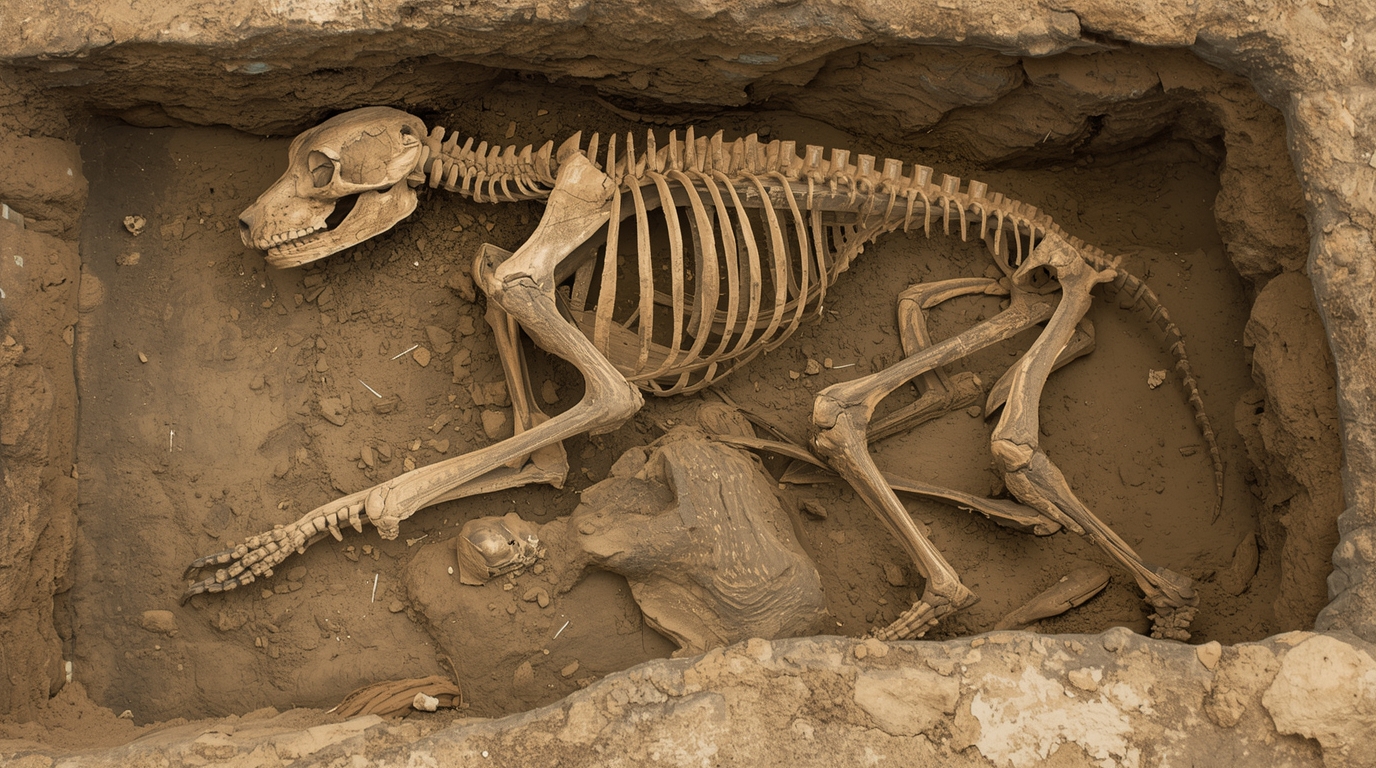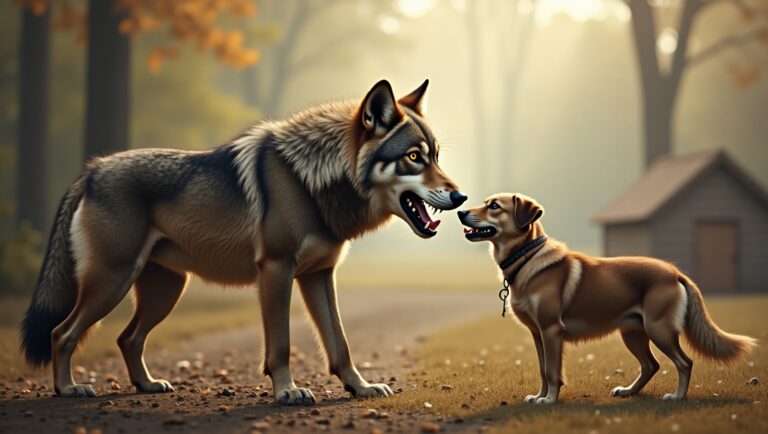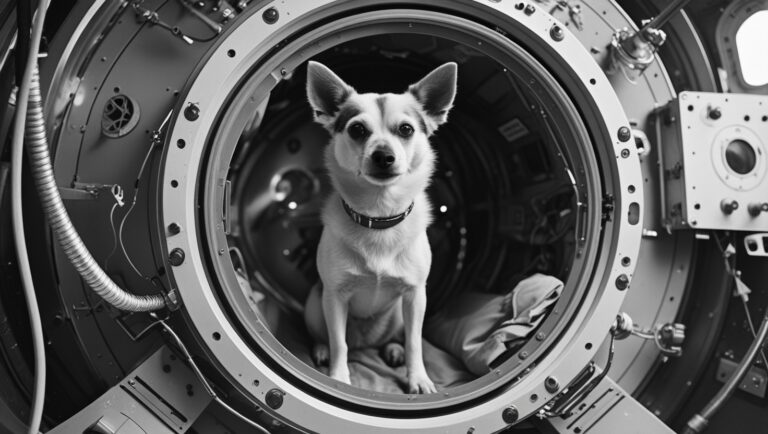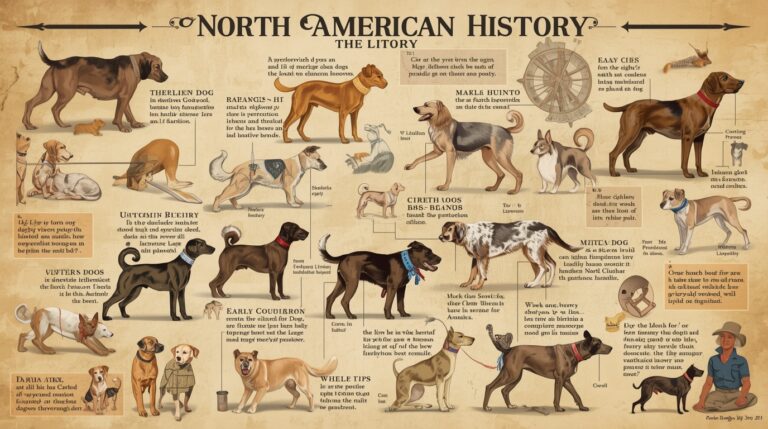Role of Dogs in Early Human Societies

Introduction: A Timeless Partnership
The bond between humans and dogs is one of the most enduring and significant interspecies relationships in human history. Long before agriculture, cities, or written language, domesticated dogs (Canis lupus familiaris) walked beside our ancestors. In early human societies, dogs served critical roles as hunting partners, camp guardians, companions, and even ritual symbols. Understanding their role reveals profound insights into the emotional, cultural, and practical evolution of human civilization.
Timeline of Early Dog Domestication
Modern studies suggest that dog domestication began between 20,000 and 40,000 years ago, predating the domestication of any other animal. Genetic evidence from ancient DNA sequencing points to an extinct population of gray wolves (Canis lupus) as the likely ancestors of dogs. Fossil and archaeological findings confirm that dogs were present in human campsites long before agriculture. This early bond helped set the stage for the co-evolution of two intelligent social species.
The First Dogs: From Wolves to Campfire Companions
The transformation from wolf to domestic dog likely began when less aggressive wolves scavenged near human camps. Over time, selective pressures favored those with friendlier temperaments. These proto-dogs gradually integrated into human life—sleeping near fires, warning of predators, and helping with hunts. This human-canine mutualism offered survival advantages for both species and laid the foundation for emotional and behavioral synchronization.
Mutual Benefits: Survival Through Partnership
In prehistoric times, dogs were not pets—they were survival tools and cooperative partners. Early humans benefited from dogs’ superior senses (especially smell and hearing), which helped detect prey or threats. In turn, dogs received food, shelter, and protection. This symbiotic relationship enhanced both species’ fitness and catalyzed a social and ecological co-adaptation that still persists.
Dogs in Paleolithic Hunting Strategies
Archaeological and ethological evidence shows that Paleolithic hunting groups utilized dogs to increase their success rates. Dogs helped in tracking, flushing out, and even retrieving prey. Some cave sites, including those in France and Spain, depict humans and dogs hunting together. These prehistoric hunting dogs were likely smaller and more agile than wolves, adapted to work alongside humans in coordinated tactics.
Neolithic Settlements and the Rise of Herding Dogs
During the Neolithic Revolution (~10,000 BCE), humans shifted from foraging to farming. With the rise of agricultural societies, dogs began to play new roles. They were used to herd livestock, guard grain stores, and manage domesticated animals like goats and sheep. Fossils from early farming villages in the Fertile Crescent, Anatolia, and Central Europe confirm the presence of dogs in these sedentary communities.
Guarding and Protection: Dogs as Sentinels
One of the earliest and most consistent roles of dogs in ancient societies was protection. Dogs acted as camp sentinels, barking at predators or intruders. Their acute hearing and sense of smell made them natural alarm systems. In Neolithic settlements, pit houses, and temporary hunting camps, dog remains are often found near entrances or walls—supporting their role in security.
also read this Origins and Domestication of Dogs
Dogs in Early Human Dwellings and Campsites
Evidence of dog-human cohabitation is found in Ice Age shelters, Mesolithic hunter camps, and Neolithic villages. Dog footprints have been discovered near hearths, and bones often appear in refuse piles—showing that dogs lived intimately with humans. In some cases, juvenile dog skeletons with signs of injury or disease show that people cared for sick animals, suggesting an early emotional bond.
Evidence from Dog Burials and Archaeological Sites
Perhaps the most compelling evidence of dogs’ importance comes from their inclusion in burial contexts. Intentional dog burials across Eurasia, Africa, and the Americas demonstrate that early societies assigned spiritual, social, or symbolic value to dogs. In some sites, dogs were buried individually, while others show co-burials with humans—often with grave goods such as bones, tools, or ornaments.
The Bonn-Oberkassel Burial: Oldest Companion Evidence
Discovered in Germany, the Bonn-Oberkassel site contains a 14,200-year-old grave featuring a man, woman, and dog. The dog skeleton shows signs of having survived canine distemper, which would have required weeks of care—a testament to early human compassion. This burial is the oldest indisputable evidence of a domesticated dog treated as a family member.
Ain Mallaha and the Emotional Bond in Prehistory
At Ain Mallaha (Eynan) in modern-day Israel, a Natufian grave dated to about 12,000 years ago was found containing a woman buried with a puppy, her hand resting on its side. This intimate gesture highlights the emotional aspect of the human-canine relationship. Dogs were more than tools—they were companions, mourned in death.
Dogs and the Natufian Culture of the Levant
The Natufians were among the first cultures to sedentarize and practice early cultivation. Their villages often show clear evidence of dogs living in close proximity to humans. Dog remains have been found in graves, under houses, and in communal spaces. Their burial with humans and children suggests that dogs were integrated into the family unit and held symbolic or spiritual significance.
Zhokhov Island Dogs: Arctic Utility and Coexistence
In Zhokhov Island, off the coast of Siberia, researchers found 9,000-year-old dog remains with morphological traits similar to modern sled dogs. Their placement near human dwellings, combined with wear patterns on teeth and bones, indicates they were used for transport, hunting in snow, and possibly ritual purposes. This represents one of the earliest known examples of functional dog breeding.
Dogs in Ritual and Religion: Symbolic Use in Ancient Cultures
Dogs have been part of spiritual life in early societies. In some Neolithic and Bronze Age cultures, dogs were buried with ceremonial items, sometimes near shrines or ritual structures. In Siberia, Japan, and the American Southwest, dog remains show signs of intentional burial positioning, often associated with mythological beliefs about the afterlife.
Prehistoric Dog Depictions in Cave Art
While rare, some cave paintings and petroglyphs depict canid-like figures. In Saudi Arabia’s Shuwaymis region, 8,000-year-old rock art shows dogs on leashes, assisting humans in hunting scenes. These visual records provide cultural evidence of dogs’ roles, confirming what osteological evidence already suggests: dogs were integral to human identity.
Emotional vs. Functional Roles of Dogs in Early Societies
Early humans didn’t just use dogs—they cared for them. Studies of ancient remains often reveal healed injuries, indicating long-term survival due to human help. While functionality (hunting, guarding) was crucial, dogs also offered comfort, emotional support, and perhaps a model for early interspecies empathy, laying a psychological foundation for modern petkeeping.
Human-Animal Mutualism and Cognitive Co-evolution
The concept of mutualism in biology refers to cooperative interaction that benefits both parties. Dogs and humans evolved together, each shaping the other’s behavior and even cognitive development. Dogs adapted to read human gestures and emotions; humans developed verbal and non-verbal cues to communicate with dogs. This cognitive co-evolution enhanced both species’ survival and bonded them socially.
Migration and Movement: How Dogs Traveled with Humans
As humans migrated out of Africa and across continents, dogs went with them. Fossilized dog remains from North America, Central Asia, and Europe mirror human migration patterns. Dogs likely helped early groups settle unfamiliar landscapes, guard camps, and establish hunting networks—in essence, becoming co-explorers of new worlds.
Ancient DNA and Genetic Evidence of Early Dogs
Advancements in ancient DNA analysis allow scientists to trace the genetic ancestry of early dogs. These studies show multiple domestication centers, including East Asia, Siberia, and possibly Europe. DNA from prehistoric dog burials reveals distinct lineages, some now extinct, and helps reconstruct the spread of dogs in tandem with human cultural evolution.
Dogs and Early Children: Companions and Guardians
Some archaeological sites reveal dogs buried with children, suggesting that dogs were considered protectors or playmates. In North American and Levantine burials, dogs often appear curled near infants or children. This close proximity hints at a guardian role, both spiritual and practical—guarding children from predators or representing loyalty in the afterlife.
Regional Differences in Dog Use (Asia, Europe, Americas)
Cultural practices around dogs varied:
- In Central Asia, dogs were bred for herding and sledding.
- In Mesoamerica, dogs had ritual importance; the Xoloitzcuintli was thought to guide souls to the afterlife.
- In Europe, early agrarian societies used dogs for guarding and hunting.
- In Africa, early dog remains are tied to nomadic pastoralism.
Despite functional variation, emotional and symbolic roles of dogs appear consistently.
The Transformation of the Dog-Human Bond Over Time
As societies evolved—introducing cities, trade, and written law—the role of dogs shifted. From working companions to status symbols and spiritual figures, dogs began to occupy multiple social spaces. In some cultures, dogs were revered; in others, marginalized. However, their adaptive nature ensured that they remained close to humans across eras.
What Early Dogs Taught Us About Domestication
The story of dogs is also a story about human civilization. Their early domestication, functional versatility, and emotional resonance show how humans choose and shape animal relationships. Dogs, unlike most species, adapted fully to human emotions, tasks, and even hierarchies—making them an unparalleled model of domesticated integration.
Lessons for Modern Dog Ownership
Understanding the role of dogs in early human societies reframes our modern relationships. Dogs are not simply pets—they are evolutionary partners who have shaped and been shaped by us. Recognizing their deep historical contributions enhances how we care for, train, and engage with them today.
Conclusion: Legacy of Loyalty
From ancient caves to modern cities, dogs have remained a constant in the human journey. Their presence in burial sites, camps, homes, and myths speaks to a bond rooted in trust, functionality, and love. The role of dogs in early human societies wasn’t peripheral—it was central to survival and culture. That legacy endures today every time a dog lays by a campfire, guards a home, or meets a human’s gaze with unbreakable loyalty





